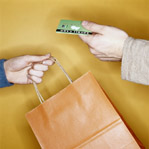- عربي
- Ukraine
- Economy
-
Investment
- Current Investment Trends
- Legal Conditions of Doing Business
- Investment Policy
- Competition
- Setting a Business in Ukraine
- Mergers and Acquisitions
- Taxation
- Import and Export
- Banks and Bank Regulation
- Convertibility and Profits Repatriation
- Currency Regulation
- Protection of Intellectual Property Rights
- Companies
- Travel to Ukraine
- About us
- Useful Sites
- Gallery
- News
Currency rates in UAH
| AED | ||
| BHD | ||
| EGP | ||
| KWD | ||
| LBP | ||
| OMR | ||
| QAR | ||
| SAR | ||
| SYP |
2015-07-06
| Kiev |  |
+32 |
| Donetsk |  |
+28 |
| Dnipropetrovsk |  |
+31 |
| Lviv |  |
+31 |
| Odessa |  |
+27 |
Consumer Market
Retail is one of the leading industries of Ukrainian economy, ranking the third in terms of total foreign investment inflows. It offers a solid growth potential in the years to come. Despite having the 6th largest population in Europe the country’s per capita retail sales are significantly lower than those in Russia and Western Europe.
Retail trade is one of the oldest and most dynamically growing branches of modern Ukraine’s economy, contributing 16% of the country’s GDP. Rapid increasing personal incomes in the first decade of 2000s drove rapid market expansion and the arrival of some major retail players.
Apart from consumer spending, the important market drivers in Ukrainian retail are the share of modern retailing and market saturation.
The financial and economic crisis of 2008-2009 had significant negative impact on retail development. The crisis was a blow to the branch, but it also eliminated such problems as the high cost of building lots and high commercial rents. The industry resumed careful growth only in 2011-12. The retail sector is very attractive to investors because of the large size of the market and pent-up demand. Ukrainians continue to spend over half of their income on food and food industry’s profit heavily depends on household incomes.
Ukrainian trade in food products developed rapidly over the past decade. Demand for processed products is driven by growing consumer incomes in major urban centers. Stable national currency during the past four years also decreased exchange risks. The food industry’s share in manufacturing is almost 20 percent. In 2013, the industry’s total output of exceeded US $14 billion. Over 20,000 enterprises operate in the food-processing sector of Ukraine. The fastest growth rate is found in fruit and vegetable processing, edible oils production, pastry and biscuits, baby food, and alcoholic beverages production.
Ukraine’s retail market is quite young, evident in its lack of formation and pent-up demand. So, retail, especially clothing sales, private entrepreneurs, and bazaar traders take significant part of the market. Low salaries in the regions prevent the expansion of branded clothing stores and widespread employment in the private farm sector supports the continued existence of farmers’ markets.
Another important factor underlining the potential of Ukrainian retail is availability of quality commercial real estate. The gross leasable area (GLA) per 1000 inhabitants in Ukraine is several times lower than that in Western Europe. For example, in Kyiv GLA is 155 m2 per 1000 inhabitants compared to 600-700 m2 in European cities as of 2014.
Historically, Ukraine’s retailers have suffered from a continuing shortage of quality retail space. This is because commercial space is new concept for most post-soviet countries, including Ukraine. In soviet times, prior to 1991, shortages were a permanent feature of the retail market, as was preferential availability and state ownership.
In 1990s and early 2000s the share of modern retail was next to nothing. Most of the trading was performed through the street markets. Even now, it is estimated that only 40-50% of all retail sales are performed through modern retail networks. In food retail, the numbers are even smaller - 30%. Nevertheless, organized modern retail will continue to replace street markets.
With the revival of real incomes across the population and the arrival of major foreign and local players (who were capable of full-scale construction projects from the ground up) on the market, did new shopping and recreation centers begin to be built. The supply failed to keep up with expanding demand, resulting in very high rental rates for retail space.
In 2013, domestic retail sales in the Ukrainian organized market totaled EUR 40.8 billion, or about EUR 904 per capita. At the same time, according to research, Ukrainian consumers spend about 30% of their income on food.
In Ukraine (excluding the territory of the Autonomous Republic of Crimea and Sevastopol), the total retail trade turnover in January-June 2014 amounted to EUR 29.7 billion, i.e., 0.8% more than in the corresponding period of 2013 in UAH terms. The current geopolitical situation has had a negative impact on consumer demand and the devaluation of the national currency reduces the purchasing power of the population, so growth is likely driven by higher prices.
Taking into account the current situation in the Donbas region, the rate of trade in the Donetsk and Lugansk regions has reduced dramatically.
In 2015, Ukrainian retailers operated in a tough environment with sharply reduced consumer spending power following a strong currency devaluation and political and economic uncertainty resulting from conflicts in the eastern regions of Ukraine. Many Ukrainians had to start saving due to quickly growing prices for products and services alike, especially for import-dependent ones, and they limited purchases to the most necessary products. In absolute terms, sales were highly affected with sales dynamics somewhat compensated by high growth in prices observed in Ukraine at the end of 2015.
Food retail
Food retail turnover in Ukraine is estimated at EUR 16.7 billion. Separate stores still account for a large share of the market.
Ukrainian consumers buy a significant share of food products in open markets. Nevertheless, a decline in the share of unorganized trade due to the presence of trading networks operating in the same price segment is expected. According to GT Partners Ukraine, in 2013 the share of food network operators in the total retail turnover of enterprises of the country was 33%, which is 2% more than the year before.
A low level of consolidation continues to characterize the food retail market in Ukraine. There are more than 100 modern retailers. On average, there are 10 such companies in each region. The lowest number (5 operators) is in Khmelnytsky and Sumy and the highest (more than 30 operators) is in Kiev.
International players such as Metro Group, Auchan, Rewe Group (Billa) and Spar are present on the Ukrainian market. However, the local companies ATB Market and Fozzy Group lead the market in terms of both sales and number of stores. Almost all those in the top-10 own networks of stores of different retail formats (supermarket, hypermarket, “near home,” cash & carry, discount stores).
The leading networks, ATB Market and Fozzy Group, have maintained their positions and growth to a greater extent, due to active network expansion in the "near home" and minimarket formats. The small sizes of these stores and their emphasis on the lowest prices have allowed them to show the greatest percentage growth in the face of the declining purchasing power of the population. Therefore, many operators are trying to reach this segment of the market, opening new outlets. In 2014, therefore, their number increased by 28%, reaching 2,045 stores. Visitors to Ukrainian supermarkets have started to more actively buy products of the stores’ own brands (private label brands).
The self-packing by shops of cereals, frozen semi-finished foods, household chemicals and many other products for resale under house brands is not a new move. These products generate high demand among customers. According to ua-retail, since the beginning of 2014 unprecedented sales growth of 30% has been recorded; by the end of 2014 it reached up to 40%. Increasing interest in products in this category is a stable trend, one conditioned by their more attractive prices.
In the end of 2015 ATB-Market and Fozzy Group (or Fozzy TOV) were on the competitive edge, boasting nationwide presence and strong brand image of their chains. Auchan-Ukraine Hypermarket was another highly competitive grocery retailer. Within retailers, companies associated with Russia were the most vulnerable. Ukrainians due to the conflict with Russia demonstrated patriotism, and avoided buying Russian products whenever possible to substitute them with local ones.
Supermarkets and hypermarkets
The market share of super- and hypermarkets in 2001-2013, is estimated at 45-47 percent (and rising), due to the quickly growing number. The big retailers often provide new and improved services and this is the reason why traditional retailers are losing their clients in big cities.
The average floor space of a Ukrainian supermarket grew from 822 square meters in 2005 to 914 square meters in 2007 and 1670 square meters in 2014. The first Ukrainian mall – “Karavan” was built in Ukraine in 2004 with a total area of 13,000 square meters and total floor space of 8,000 square meters. Three shopping centers in Kyiv totaling 100,200 m2 were introduced to the market during 2012, which increased the total retail stock to about 800,000 m2. According to supermarket owners, stock lists of smaller stores include 30–50,000 items, 80-90 percent of which are of Ukrainian origin. Dairy and fish products, meat, bakery and spirits are widely represented. Supermarkets often cut their margins to attract as many customers as possible.
Kiosks and Gas Marts
Since the 1990’s the number of kiosks has dramatically diminished. Such retail locations can still be found at bus stops, underground stations, road intersections, near open-air markets, and in rural areas. Lately, kiosks become specialized as food producers sell their own products near public transportation stops.
The number of modern gas stations continues to grow rapidly in Ukraine. More than 20 percent of Ukrainian gas stations have stores that sell packaged food products.
Chain Convenience Stores and Self-service Groceries
Chain grocery stores are becoming very common in Ukraine lately. Usually groceries are located in suburbs, and have limited floor space. The average floor space varies from 300 to 500 square meters. Stock lists include a range of 1,500 to 3,500 items. A narrow product range is being offered. Grocery outlets are popular among consumers with below-average incomes who generally purchase short shelf life goods daily.
Traditional Outlets: Independent Grocery Stores and Open-Air Markets
Soviet-style stores with behind-the-counter sales (traditional groceries) are quite common in Ukraine. Some of these groceries sell food products to office employees in central districts during the workweek. They are gradually losing their clients due to their limited product line.
HRI Food Service
The HRI sector in Ukraine remains small, but is developing quite rapidly. In 2014, the number of cafes, bars, restaurants, and other HRI institutions in Ukraine exceeded 38,000. New fast food outlets and restaurants have started to change the structure of the food service sector dramatically.
E-commerce
Over 50% of the Ukrainian population are active users of the Internet. Based on a GfK report, there are 19.3 million active online users, almost 2.8 million of whom are online consumers (the data covers the whole territory of Ukraine and users aged 16+).
Home appliances and clothes are the most popular groups of products, those with the highest demand among Ukrainian online customers. In 2013-2014 the cosmetics, perfumes, jewelry, accessories and gifts segments substantially added to sales compared to 2012-2013.
Globally, the media sector, sporting goods (nearly 33%), appliances (about 24%) and furniture (about 15%) account for the bulk of online retail. Slightly less commonly consumers purchase apparel, personal hygienic goods, and food and beverages. Business Insider forecasts an inevitable increase in the share of online trade in the long-term perspective.
E-commerce in Ukraine is still in the early development stage, so market players should use the opportunities for development that exist, especially taking into account the need to raise consumer interest in e-purchases.
Based on Aukrotop100 data, the Ukrainian e-commerce market continues to grow. By the end of the year its volume will cross the EUR 1.5 billion benchmark. The forecast for the next five years is for 400% growth, reaching EUR 7.5 billion in 2018.
E-commerce in Ukraine demonstrated sustainable growth in 2013-2014 in spite of a low Internet penetration ratio (42%-51% compared to 80%-90% in the USA and Europe), low consumer income and the intrusion of regulatory bodies in the operations of online shops.
Large operators, like Foxtrot Comfy and Allo, developed online sales channels primarily in the home appliances segment.
Although we have a variety of online payment systems, 80% of customers still prefer cash payments.
The top-5 Ukrainian e-retailers includes the largest online shops and shopping centers, Rozetka.ua being the undisputable leader among them. Among the largest players are also Tickets.ua, LeBoutique, OLX, Prom.ua, Aukro, Sokol, FotoMag.com.ua and Allo. The ecommerce market is significantly consolidated and in most segments the top-5 players control 60%-90%.
Country Strong Points
Country Weak Points
Retail trade is one of the oldest and most dynamically growing branches of modern Ukraine’s economy, contributing 16% of the country’s GDP. Rapid increasing personal incomes in the first decade of 2000s drove rapid market expansion and the arrival of some major retail players.
Apart from consumer spending, the important market drivers in Ukrainian retail are the share of modern retailing and market saturation.
The financial and economic crisis of 2008-2009 had significant negative impact on retail development. The crisis was a blow to the branch, but it also eliminated such problems as the high cost of building lots and high commercial rents. The industry resumed careful growth only in 2011-12. The retail sector is very attractive to investors because of the large size of the market and pent-up demand. Ukrainians continue to spend over half of their income on food and food industry’s profit heavily depends on household incomes.
Ukrainian trade in food products developed rapidly over the past decade. Demand for processed products is driven by growing consumer incomes in major urban centers. Stable national currency during the past four years also decreased exchange risks. The food industry’s share in manufacturing is almost 20 percent. In 2013, the industry’s total output of exceeded US $14 billion. Over 20,000 enterprises operate in the food-processing sector of Ukraine. The fastest growth rate is found in fruit and vegetable processing, edible oils production, pastry and biscuits, baby food, and alcoholic beverages production.
Ukraine’s retail market is quite young, evident in its lack of formation and pent-up demand. So, retail, especially clothing sales, private entrepreneurs, and bazaar traders take significant part of the market. Low salaries in the regions prevent the expansion of branded clothing stores and widespread employment in the private farm sector supports the continued existence of farmers’ markets.
Another important factor underlining the potential of Ukrainian retail is availability of quality commercial real estate. The gross leasable area (GLA) per 1000 inhabitants in Ukraine is several times lower than that in Western Europe. For example, in Kyiv GLA is 155 m2 per 1000 inhabitants compared to 600-700 m2 in European cities as of 2014.
Historically, Ukraine’s retailers have suffered from a continuing shortage of quality retail space. This is because commercial space is new concept for most post-soviet countries, including Ukraine. In soviet times, prior to 1991, shortages were a permanent feature of the retail market, as was preferential availability and state ownership.
In 1990s and early 2000s the share of modern retail was next to nothing. Most of the trading was performed through the street markets. Even now, it is estimated that only 40-50% of all retail sales are performed through modern retail networks. In food retail, the numbers are even smaller - 30%. Nevertheless, organized modern retail will continue to replace street markets.
With the revival of real incomes across the population and the arrival of major foreign and local players (who were capable of full-scale construction projects from the ground up) on the market, did new shopping and recreation centers begin to be built. The supply failed to keep up with expanding demand, resulting in very high rental rates for retail space.
In 2013, domestic retail sales in the Ukrainian organized market totaled EUR 40.8 billion, or about EUR 904 per capita. At the same time, according to research, Ukrainian consumers spend about 30% of their income on food.
In Ukraine (excluding the territory of the Autonomous Republic of Crimea and Sevastopol), the total retail trade turnover in January-June 2014 amounted to EUR 29.7 billion, i.e., 0.8% more than in the corresponding period of 2013 in UAH terms. The current geopolitical situation has had a negative impact on consumer demand and the devaluation of the national currency reduces the purchasing power of the population, so growth is likely driven by higher prices.
Taking into account the current situation in the Donbas region, the rate of trade in the Donetsk and Lugansk regions has reduced dramatically.
In 2015, Ukrainian retailers operated in a tough environment with sharply reduced consumer spending power following a strong currency devaluation and political and economic uncertainty resulting from conflicts in the eastern regions of Ukraine. Many Ukrainians had to start saving due to quickly growing prices for products and services alike, especially for import-dependent ones, and they limited purchases to the most necessary products. In absolute terms, sales were highly affected with sales dynamics somewhat compensated by high growth in prices observed in Ukraine at the end of 2015.
Food retail
Food retail turnover in Ukraine is estimated at EUR 16.7 billion. Separate stores still account for a large share of the market.
Ukrainian consumers buy a significant share of food products in open markets. Nevertheless, a decline in the share of unorganized trade due to the presence of trading networks operating in the same price segment is expected. According to GT Partners Ukraine, in 2013 the share of food network operators in the total retail turnover of enterprises of the country was 33%, which is 2% more than the year before.
A low level of consolidation continues to characterize the food retail market in Ukraine. There are more than 100 modern retailers. On average, there are 10 such companies in each region. The lowest number (5 operators) is in Khmelnytsky and Sumy and the highest (more than 30 operators) is in Kiev.
International players such as Metro Group, Auchan, Rewe Group (Billa) and Spar are present on the Ukrainian market. However, the local companies ATB Market and Fozzy Group lead the market in terms of both sales and number of stores. Almost all those in the top-10 own networks of stores of different retail formats (supermarket, hypermarket, “near home,” cash & carry, discount stores).
The leading networks, ATB Market and Fozzy Group, have maintained their positions and growth to a greater extent, due to active network expansion in the "near home" and minimarket formats. The small sizes of these stores and their emphasis on the lowest prices have allowed them to show the greatest percentage growth in the face of the declining purchasing power of the population. Therefore, many operators are trying to reach this segment of the market, opening new outlets. In 2014, therefore, their number increased by 28%, reaching 2,045 stores. Visitors to Ukrainian supermarkets have started to more actively buy products of the stores’ own brands (private label brands).
The self-packing by shops of cereals, frozen semi-finished foods, household chemicals and many other products for resale under house brands is not a new move. These products generate high demand among customers. According to ua-retail, since the beginning of 2014 unprecedented sales growth of 30% has been recorded; by the end of 2014 it reached up to 40%. Increasing interest in products in this category is a stable trend, one conditioned by their more attractive prices.
In the end of 2015 ATB-Market and Fozzy Group (or Fozzy TOV) were on the competitive edge, boasting nationwide presence and strong brand image of their chains. Auchan-Ukraine Hypermarket was another highly competitive grocery retailer. Within retailers, companies associated with Russia were the most vulnerable. Ukrainians due to the conflict with Russia demonstrated patriotism, and avoided buying Russian products whenever possible to substitute them with local ones.
Supermarkets and hypermarkets
The market share of super- and hypermarkets in 2001-2013, is estimated at 45-47 percent (and rising), due to the quickly growing number. The big retailers often provide new and improved services and this is the reason why traditional retailers are losing their clients in big cities.
The average floor space of a Ukrainian supermarket grew from 822 square meters in 2005 to 914 square meters in 2007 and 1670 square meters in 2014. The first Ukrainian mall – “Karavan” was built in Ukraine in 2004 with a total area of 13,000 square meters and total floor space of 8,000 square meters. Three shopping centers in Kyiv totaling 100,200 m2 were introduced to the market during 2012, which increased the total retail stock to about 800,000 m2. According to supermarket owners, stock lists of smaller stores include 30–50,000 items, 80-90 percent of which are of Ukrainian origin. Dairy and fish products, meat, bakery and spirits are widely represented. Supermarkets often cut their margins to attract as many customers as possible.
Kiosks and Gas Marts
Since the 1990’s the number of kiosks has dramatically diminished. Such retail locations can still be found at bus stops, underground stations, road intersections, near open-air markets, and in rural areas. Lately, kiosks become specialized as food producers sell their own products near public transportation stops.
The number of modern gas stations continues to grow rapidly in Ukraine. More than 20 percent of Ukrainian gas stations have stores that sell packaged food products.
Chain Convenience Stores and Self-service Groceries
Chain grocery stores are becoming very common in Ukraine lately. Usually groceries are located in suburbs, and have limited floor space. The average floor space varies from 300 to 500 square meters. Stock lists include a range of 1,500 to 3,500 items. A narrow product range is being offered. Grocery outlets are popular among consumers with below-average incomes who generally purchase short shelf life goods daily.
Traditional Outlets: Independent Grocery Stores and Open-Air Markets
Soviet-style stores with behind-the-counter sales (traditional groceries) are quite common in Ukraine. Some of these groceries sell food products to office employees in central districts during the workweek. They are gradually losing their clients due to their limited product line.
HRI Food Service
The HRI sector in Ukraine remains small, but is developing quite rapidly. In 2014, the number of cafes, bars, restaurants, and other HRI institutions in Ukraine exceeded 38,000. New fast food outlets and restaurants have started to change the structure of the food service sector dramatically.
E-commerce
Over 50% of the Ukrainian population are active users of the Internet. Based on a GfK report, there are 19.3 million active online users, almost 2.8 million of whom are online consumers (the data covers the whole territory of Ukraine and users aged 16+).
Home appliances and clothes are the most popular groups of products, those with the highest demand among Ukrainian online customers. In 2013-2014 the cosmetics, perfumes, jewelry, accessories and gifts segments substantially added to sales compared to 2012-2013.
Globally, the media sector, sporting goods (nearly 33%), appliances (about 24%) and furniture (about 15%) account for the bulk of online retail. Slightly less commonly consumers purchase apparel, personal hygienic goods, and food and beverages. Business Insider forecasts an inevitable increase in the share of online trade in the long-term perspective.
E-commerce in Ukraine is still in the early development stage, so market players should use the opportunities for development that exist, especially taking into account the need to raise consumer interest in e-purchases.
Based on Aukrotop100 data, the Ukrainian e-commerce market continues to grow. By the end of the year its volume will cross the EUR 1.5 billion benchmark. The forecast for the next five years is for 400% growth, reaching EUR 7.5 billion in 2018.
E-commerce in Ukraine demonstrated sustainable growth in 2013-2014 in spite of a low Internet penetration ratio (42%-51% compared to 80%-90% in the USA and Europe), low consumer income and the intrusion of regulatory bodies in the operations of online shops.
Large operators, like Foxtrot Comfy and Allo, developed online sales channels primarily in the home appliances segment.
Although we have a variety of online payment systems, 80% of customers still prefer cash payments.
The top-5 Ukrainian e-retailers includes the largest online shops and shopping centers, Rozetka.ua being the undisputable leader among them. Among the largest players are also Tickets.ua, LeBoutique, OLX, Prom.ua, Aukro, Sokol, FotoMag.com.ua and Allo. The ecommerce market is significantly consolidated and in most segments the top-5 players control 60%-90%.
Country Strong Points
- One of the biggest markets in Europe – 45 million consumers;
- The most dynamic GDP growth in Europe;
- A very good educational system: fourth in the world, in terms of specialists with diplomas in the high-tech sector;
- A strategic geographical position, at the crossroads of Europe, Russia and Asia;
- A growing middle class, estimated at 20% of the population;
- The presence of major corporations such as Kraft Foods, Coca-Cola, Hewlett Packard, Cargill, Knauf, Raiffeisen Bank, Credit Agricole and many others;
- A banking sector that is being strengthened and reformed.
Country Weak Points
- Little support for foreign investors in domestic legislation;
- The weak financial position of the national fuel company, Naftogaz, and the country’s permanent risk of being unable to meet its imported natural gas bill;
- High inflation level;
- Political instability;
- Corruption levels still high.




